the Romans knew how to build lasting structures. But over the ages most stones were 'borrowed' for other buildings
entering the ruins
buy your tickets here
the latrine was strategically located at the lower fort's edge
the grainery, well ventilated below an elevated floor
Hadrian's Wall at Housesteads Fort
The exact reasons why emperor
Hadrian decided to build a 118 km long fortified coast to coast wall in northern England are not known,
but it must have something to do with keeping the wild Caledonians in the Scottish Lowlands at bay.
Construction of
Hadrian's
Wall started in 122 AD and the Emperor himself is said to have visited the works. When finished, its whitewashed walls must have
been quite an impressive landmark.
His successor build his own wall 160 km to the north, but this
Antonine Wall was
soon after relinqueshed.
Hadrians Wall was in use even after the Romans fully abandoned England in 410, but later it became a
ruin and its stones were used for other buildings and roads.
But enough of the construction exists today to get a feeling
for how it must have looked like in its haydays.
In May 2015 we visited the remains of Hadrian's Wall at Housesteads Roman
Fort.
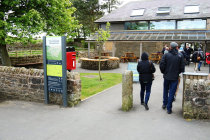
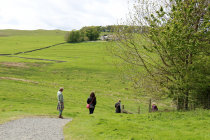
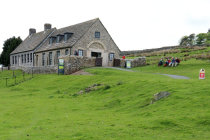
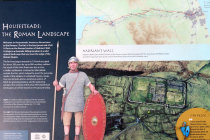
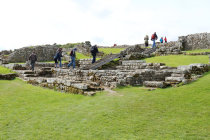
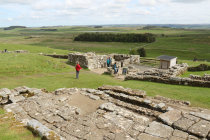
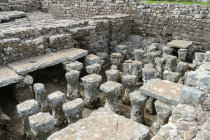
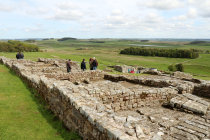
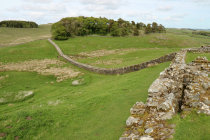
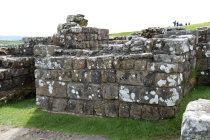
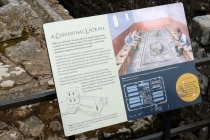
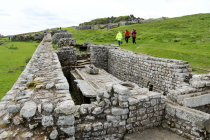





the visitor center




our guide points to the hilltop, where the actual Roman Fort is


















Hadrian's wall stretching to the East with people at the Knag Burn Gateway












England"s best preserved Roman latrine. Romans had a different view on privacy




















































